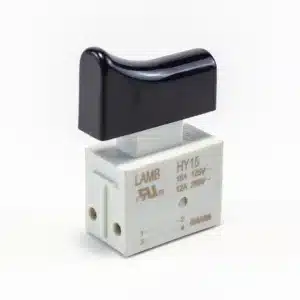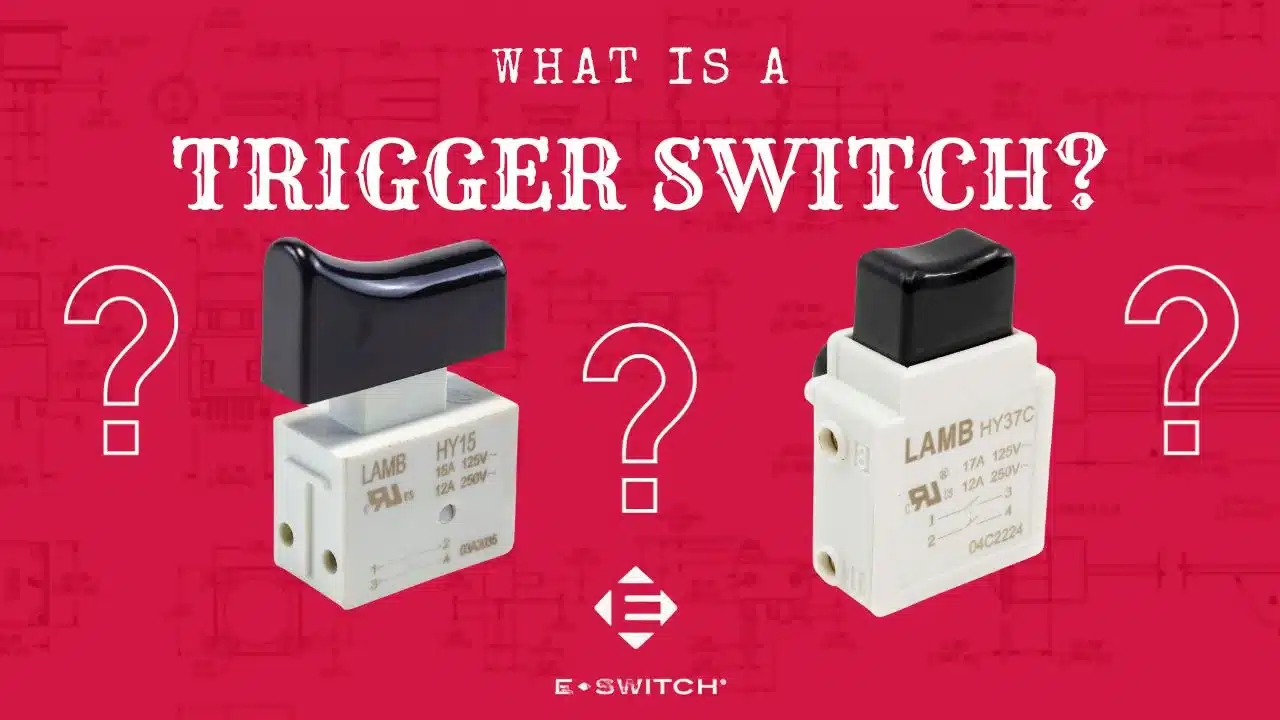What is a Trigger Switch?
A trigger switch is a type of switch that is typically designed to be actuated by a trigger-like mechanism or similar component. This particular switch is commonly used in various devices and systems where a manual and often momentary activation or deactivation of a function is required.
The term “trigger switch” is also often associated with hand-operated tools or devices where the user’s action triggers a specific function. Some common characteristics of trigger switches include:
1. Actuation Mechanism
Trigger switches are designed to be activated by a specific mechanical action, such as pulling a trigger. The actuation can be momentary, meaning it only occurs while the trigger is being held down or pressed.
2. Spring Mechanism
Many trigger switches incorporate a spring mechanism that returns the trigger to its original position when released. This spring action ensures that the switch returns to its default state, breaking the electrical contact or deactivating the function.
3. Application in Tools
They’re frequently used in power tools, such as drills, saws and other handheld devices. In these applications, pulling the trigger activates the tool and releasing it deactivates the tool, providing a convenient and ergonomic way for users to control the tool’s operation.
4. Momentary Action
Trigger switches often have a momentary action, meaning the switch is only active while the trigger is being actuated. This is different from latching switches, which stay in their activated or deactivated state until manually changed.
What Are They Used For?
Some common uses include:
Power Tools: They’re widely employed in power tools such as drills, saws, angle grinders and sanders.
Handheld Devices: Many handheld devices, including some electronic gadgets and appliances, utilize these switches. These devices often have a trigger or button that users press to initiate a specific action or function.
Gaming Controllers: They’re commonly found in gaming controllers for consoles and PCs. The triggers on these controllers serve as input mechanisms for actions in video games, allowing users to control acceleration, braking or other functions.
Firearms: In firearms, the term “trigger” refers to the mechanism used to discharge a firearm. A trigger switch, in this context, is an integral part of a firearm’s firing system.
Remote Controls: Some remote controls, especially those used for certain industrial or specialized applications, may incorporate these switches for specific functions.
Industrial Control Systems: Trigger switches are used in various industrial control systems where manual control is needed. This can include activating or deactivating machinery, starting or stopping processes, or triggering specific functions in automated systems.
Emergency Stop Buttons: In industrial settings, trigger switches are often used as emergency stop buttons. These switches provide a quick and easily accessible means for operators to halt machinery or processes in case of an emergency.
Cameras and Photography Equipment: Some cameras and photography equipment use them to capture photos or control specific functions.
Pros & Cons
Pros
User-Friendly Operation: They’re are often intuitive and user-friendly. The action of pulling a trigger or pressing a button is a familiar and natural movement for many users.
Precise Control: They allow for precise control, especially in applications like power tools and gaming controllers where the degree of trigger pull can correspond to the level of output (e.g., speed or acceleration).
Momentary Activation: Many are designed for momentary activation, meaning the switch is only active while the trigger is being held down. This is suitable for applications where temporary or intermittent control is needed.
Ergonomics: Trigger switches are often designed with ergonomics in mind, making them comfortable to use for extended periods. This is particularly important in tools and devices that are handheld.
Quick Response: They can provide a quick response, allowing for rapid activation or deactivation of a function. This is crucial in applications like emergency stop buttons.
Versatility: They’re versatile and can be adapted to various applications. They come in different shapes, sizes and designs to suit the specific needs of different devices.
Cons
Fatigue with Prolonged Use: Continuous use, especially in applications requiring prolonged or repetitive activation, can lead to user fatigue.
Complexity in Design: Some trigger switches, particularly those with advanced features, can be complex in design. This complexity may increase manufacturing costs and maintenance requirements.
Limited Functions: They’re designed for specific functions and may not be suitable for applications that require multiple functions to be controlled simultaneously.
Not Suitable for Continuous Operation: While they’re excellent for momentary actions, they may not be ideal for applications requiring continuous or latched activation.
Sensitivity to Environmental Conditions: Some may be sensitive to environmental conditions such as dust, moisture or temperature extremes, which can affect their performance.
E-Switch Trigger Switch Products

E-Switch offers a variety of trigger switches for your application. Because each project has specific requirements, almost every trigger switch is custom. There are multiple sizes and body styles to choose from, as well as many available custom trigger caps. Contact us today to find out how we can create the ideal switch for your needs.
